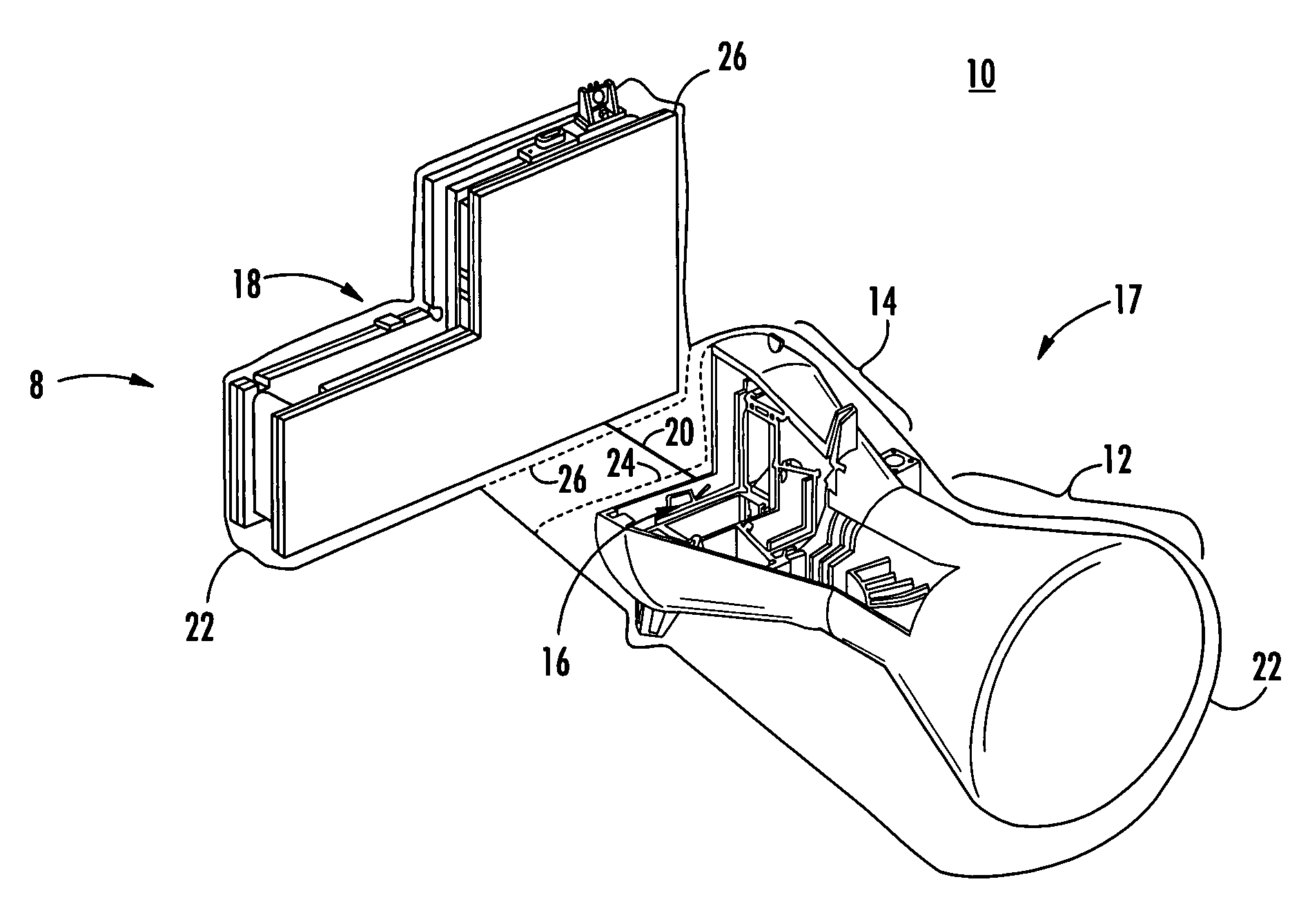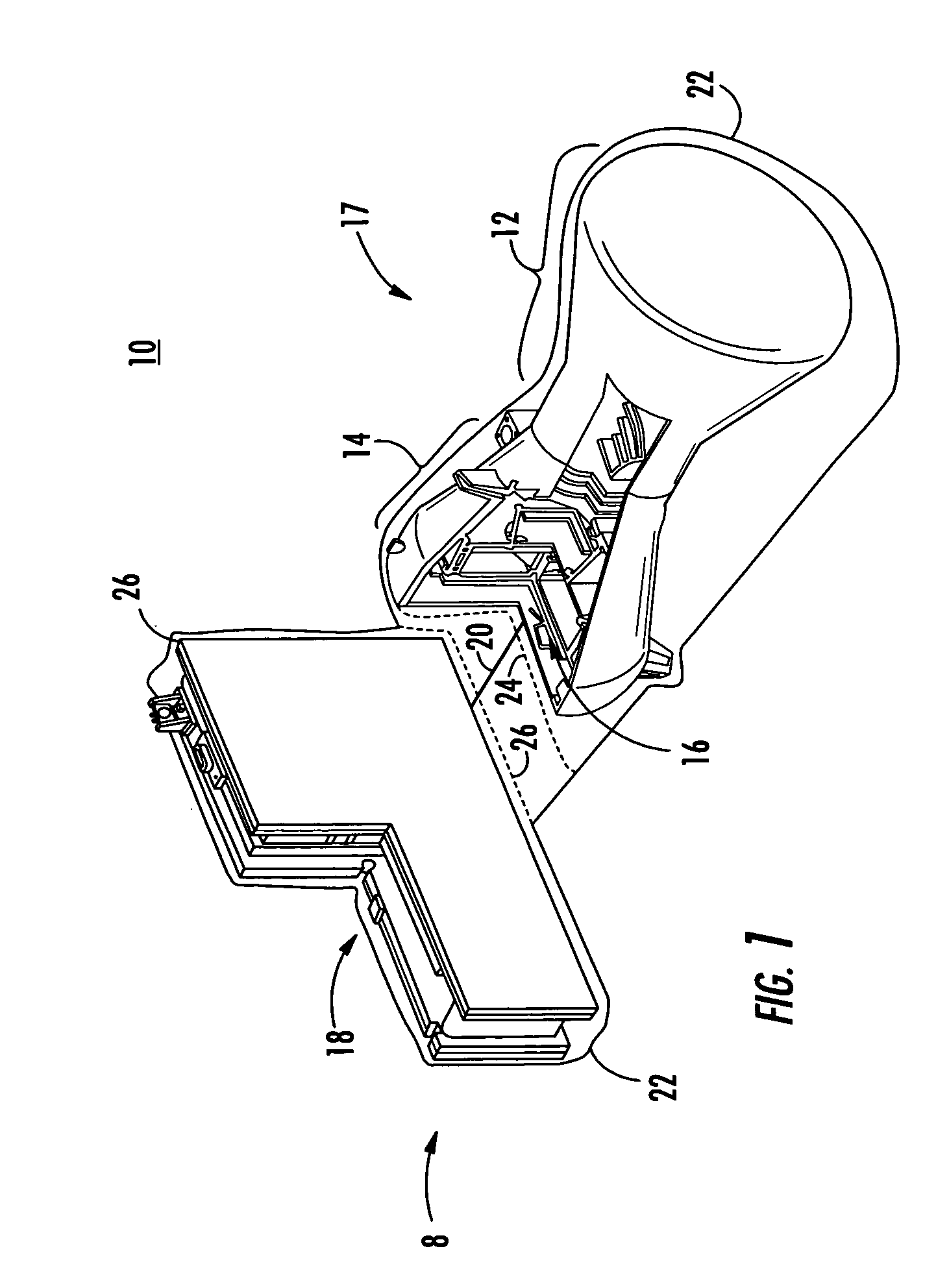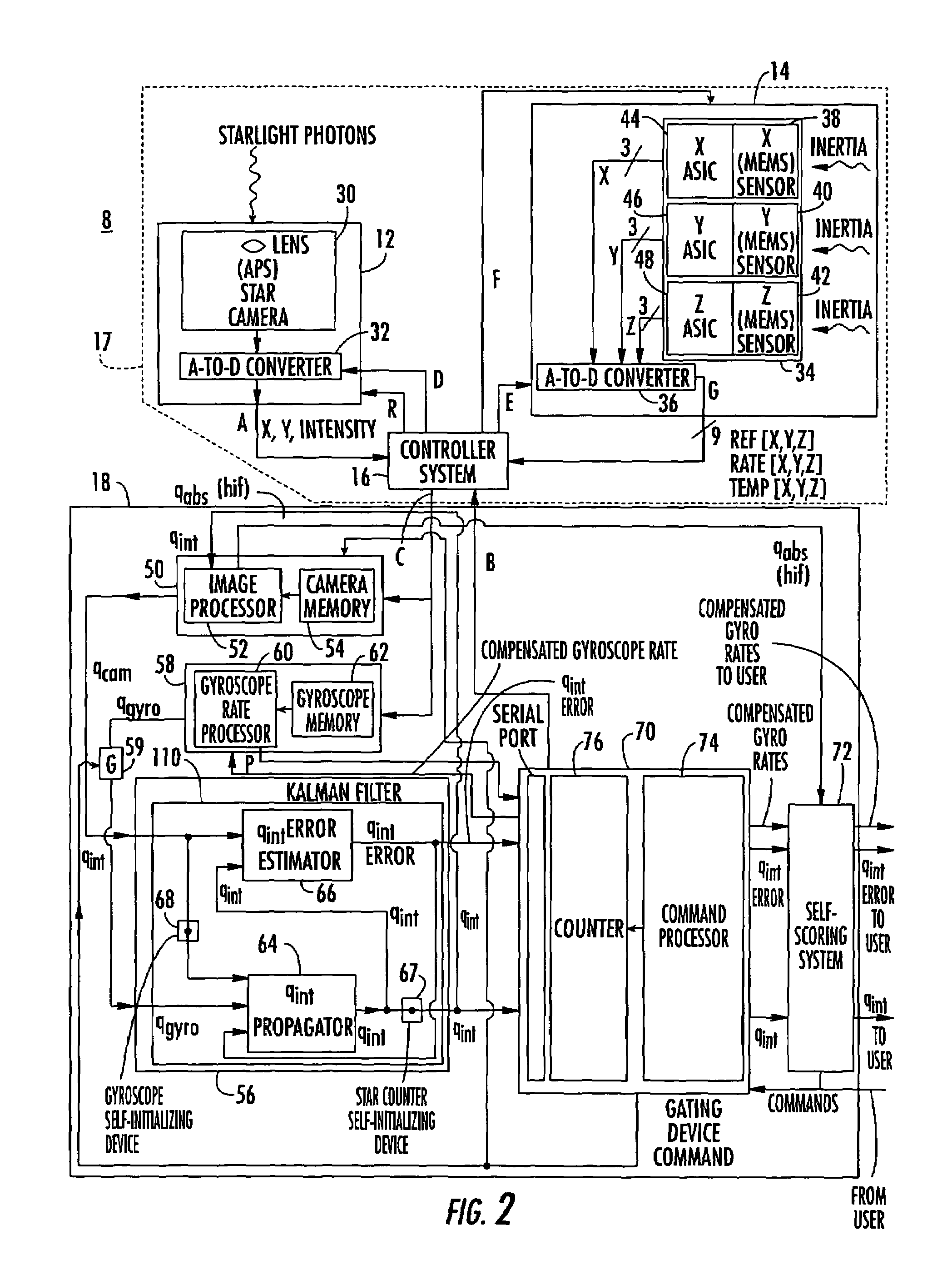Integrated inertial stellar attitude sensor
a technology of inertial stellar attitude and sensor, which is applied in the direction of instruments, process and machine control, etc., can solve the problems of blurred star position and brightness, star camera field of view (fov) may be changing too fast, and the star tracker camera may not be able to focus on the fov, etc., to achieve low power and volume requirements, high accuracy, and robust
- Summary
- Abstract
- Description
- Claims
- Application Information
AI Technical Summary
Benefits of technology
Problems solved by technology
Method used
Image
Examples
Embodiment Construction
[0066]Aside from the preferred embodiment or embodiments disclosed below, this invention is capable of other embodiments and of being practiced or being carried out in various ways. Thus, it is to be understood that the invention is not limited in its application to the details of construction and the arrangements of components set forth in the following description or illustrated in the drawings.
[0067]An integrated inertial stellar attitude sensor 8 for an aerospace vehicle 10 of one embodiment of this invention includes star camera system 12, gyroscope system 14, controller system 16 and data processing assembly or flight computer 18. Collectively, star camera system 12, gyroscope system 14 and controller system 16 may be referred to as camera / gyroscope assembly 17, which may be connected to flight computer 18 by connector 20. Connector 20 may be any appropriate connector known in the art including cable connections providing a serial link. Housing 22 may be disposed about integra...
PUM
 Login to View More
Login to View More Abstract
Description
Claims
Application Information
 Login to View More
Login to View More - R&D
- Intellectual Property
- Life Sciences
- Materials
- Tech Scout
- Unparalleled Data Quality
- Higher Quality Content
- 60% Fewer Hallucinations
Browse by: Latest US Patents, China's latest patents, Technical Efficacy Thesaurus, Application Domain, Technology Topic, Popular Technical Reports.
© 2025 PatSnap. All rights reserved.Legal|Privacy policy|Modern Slavery Act Transparency Statement|Sitemap|About US| Contact US: help@patsnap.com



